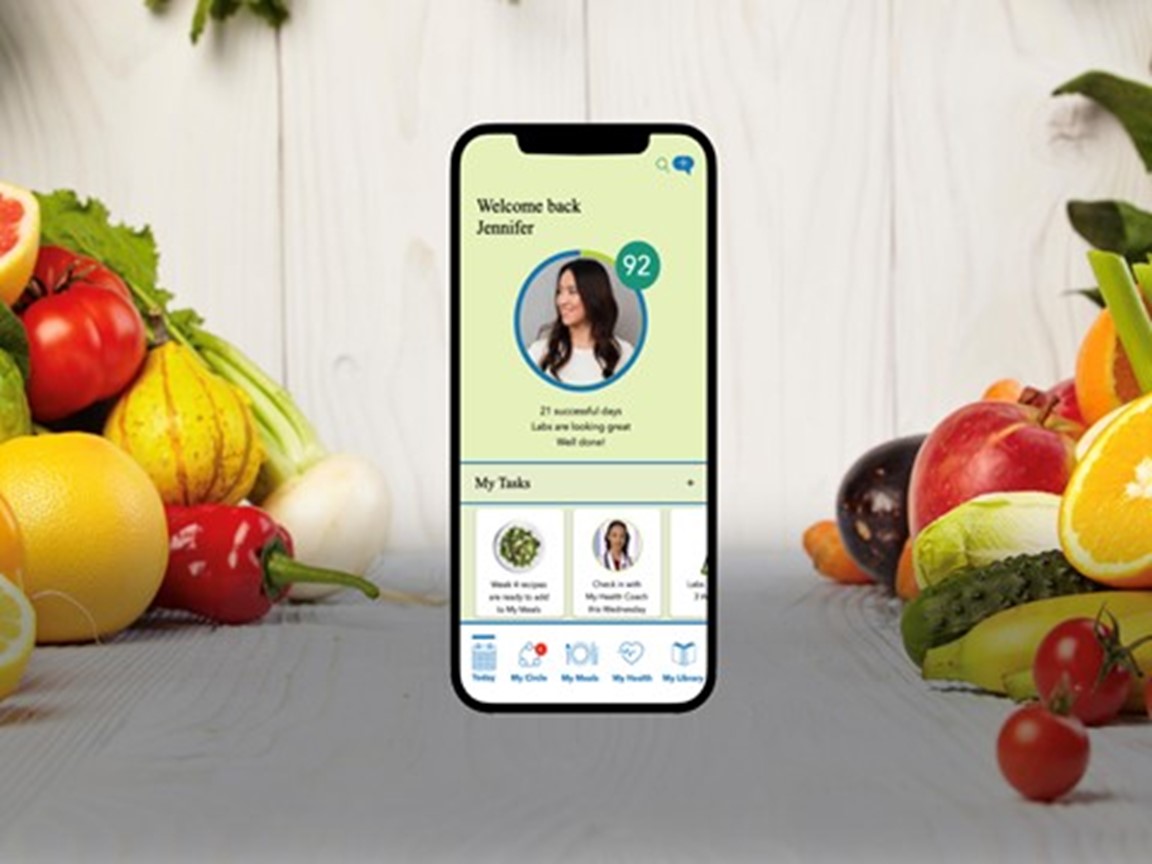Steps to Implementing the SCD
A step-by-step approach
The specific carbohydrate diet (SCD) is first and foremost a diet that removes all grains, milk products (except for highly fermented yogurt), and sugar from the diet. Many people have their own definition of what is legal and illegal on the SCD, and most of these food lists have been based upon people’s personal and sometimes collective experiences.
At Seattle Children’s Hospital, we divide the SCD into three main dietary phases, with each step differing in terms of what can be eaten, its challenges, and how success is monitored. As with any intervention, it is important that during these three phases, an individual is closely monitored for overall well-being as well as nutritional status.
- Diet introduction and anti-inflammatory step
- Foundation and maintenance step
- Food reintroduction step
Although different variations of the SCD have been around for over 100 years, the diet has not been studied extensively in medicine. The recommendations initially set up by Dr. Sidney Haas in the early 1900s were intended for individuals with celiac disease, and he later adapted the diet for inflammatory bowel disease using his clinical experience. Elaine Gottschall then adapted the diet and its recommendations based upon the experience of her daughter and others. Although this anecdotal experience may not completely answer all the questions regarding the diet, it does show that this diet works for many.
For healthcare providers, patients, and their families, the difficult part is figuring out which steps of the SCD are the most important, as well as which steps are absolute and which ones can be modified for an individual. You will hear both a lot of different opinions as well as many different experiences with the SCD. Again, these experiences and opinions are important, as they make up the combined evidence that this diet works; but we must remember that each individual is different, and one person’s experience may not mirror another’s.
In my experience, I’ve seen many individuals do well, but also some who didn’t. I’ve also seen patients who needed to be on a very strict diet without the ability to add new foods (Step 3), while others were able to add a limited number of foods without difficulty. This is one reason that this website is being published—to help set guidelines for ourselves. And I have no doubt that as we study this diet further, our current recommendations will be refined.
When doing nutritional therapy, it is important to work with your healthcare professional as well as a dietitian to ensure that the SCD is working for you and that no complications are arising from the diet itself. To do this, we have set up a protocol for evaluating individuals on the SCD. This protocol really reminds us of what our goals are—good health and nutrition.
Step 1: Diet introduction and anti-inflammatory step
For individuals who are just beginning the diet and in the first step (the anti-inflammatory step), close follow-up is required on a regular basis. Prior to starting the SCD, both individuals and their families need to understand the diet, as well as prepare for the work that it entails. Once you begin the SCD, you should follow up with your healthcare provider in 1 to 2 weeks. During each visit, we recommend that patients review how they are doing and have a full physical, including a weight check. Laboratory studies such as complete blood count, sedimentation rate, C-reactive protein, and albumin should be checked as well.
During this time, your healthcare practitioner should check PCDAI/PUCAI scores. What are these? They are validated scores for inflammatory bowel disease, meaning that you can then have an objective measure of how well your son or daughter is doing. This can be helpful for healthcare providers, patients, and parents to help keep tract of how an individual is doing with a specific treatment.
For Crohn’s disease, we follow the PCDAI, which is the pediatric Crohn’s disease activity index. This score helps individuals determine if they are in remission or having mild, moderate, or severe disease activity. For score details, please refer to the chapter on PCDAI. For individuals with ulcerative colitis, we follow the pediatric ulcerative colitis activity index, or PUCAI. This is also a validated score for disease activity for children with ulcerative colitis.
These scores are very important. Although our memories may seem reliable, sometimes days, weeks, or months pass, and it becomes much harder to remember exactly what happened when. And if you follow these scores, you can have a much better understanding of how well things are going.
The goal of each checkup is good health and nutrition. Our expectation for these first visits with the healthcare professional is to ensure that individuals are maintaining their weight or at least have minimal weight loss. We also want to make sure that their symptoms are under control and that their laboratory studies are within an acceptable range. These follow-up visits can also be a good time for individuals to ask their healthcare providers and dietician about specifics in regard to the diet. We recommend scheduling clinic visits every 1 to 2 weeks to ensure that the child is doing well.
Step 1 foods
At Seattle Children’s, we practice a standard and practical approach to the addition of foods in the specific carbohydrate diet. When we initiate the SCD, we begin with Step 1—diet introduction and the anti-inflammatory phase. We also return to this step at the beginning of an IBD flare.
- Homemade broth is a staple of Step 1 (click for a recipe). Chicken broth is the easiest to start experimenting with first, but turkey and beef-bone broth are also great choices, depending on your family’s taste preferences. Broth can be either sipped by itself or mixed in a blender with cooked chicken and cooked vegetables to create a thicker soup or a savory smoothie. (To date, no commercial SCD-legal chicken broth exists. There is, however, a legal vegetable broth: www.wellbees.com/organic-vegetable-broth.html).
- Homemade applesauce (using peeled, well-cooked apples) can be eaten cold or warm, with a bit of honey and cinnamon to taste. For extra calories, you can add coconut oil (not coconut butter, which is a food for a more advanced step).
- Homemade SCD cultured yogurt and yogurt smoothies made with very ripe bananas and cooked berries may also be included. If dairy products are a problem, this yogurt can also be made from homemade almond milk or coconut milk.
- Diluted fruit juice (100% juice with no sweeteners or additives) is a beverage option. It can also be used to make a homemade gelatin dessert, using plain powdered gelatin.
- Mock meat patties can be made by combining one part cooked chicken with two parts of cooked green vegetables (see page XX for a recipe)
- Eggs can be added with caution, after a day. An egg sensitivity might be present, especially at the beginning of the diet. But eggs, if tolerated, can be a versatile base ingredient for pancakes and other dishes:
- Mashed banana and eggs for sweet pancakes.
- Mashed vegetables and eggs for savory pancakes.
- Mashed chicken and eggs for chicken pancakes.
- Egg-drop soup is another good option, using homemade chicken broth and whipped eggs to create a savory and soothing breakfast.
It is a lot of work to make these foods from scratch. But there are good reasons to! When a person is experiencing active disease symptoms, we want to make sure that there is no possibility that illegal foods or additives that may cause the diet to be less effective accidently get into the patient’s meals. This vigilance gives the diet the best chance of success.
Step 1 is often followed for just 1 to 2 days. During this period, a slight increase in abdominal discomfort often occurs; it is usually milder than the GI symptoms from an individual’s IBD itself, and it is probably related to the “bad” bacteria dying off.
After a few days of being on Step 1, you can move on to the regular SCD diet, gradually adding solid foods, including fresh fruits and vegetables, nut flours, lentils, and beans. Introduce only one new food at a time. A 2-day interval is a great (but not mandatory) guideline for introducing new foods. This will make it possible to determine whether each new food can be tolerated. Although the initial SCD did not break the diet into steps, many helpful guidelines exist online at resources such as www.pecanbread.com.
Step 2: Foundation and maintenance step
Once individuals start gaining weight and we are seeing clinical improvements, we then decrease visits to every 2 to 4 weeks. We expect clinical remission within 2 to 3 months of dietary change. If we do not see this, we do not necessarily consider the diet a failure, but we will start thinking about why the diet is not working, as well as other therapeutic options available to us.
If an individual goes into remission, meaning that they are not only growing well and gaining weight but their symptoms have also abated, we then go to the diet foundation and maintenance step, where we follow up with individuals on a 3- to 4-month timeframe. We often monitor stool calprotectin levels to help ensure that no or minimal inflammation is present within the bowels.
If an individual is completely asymptomatic, with no evidence of inflammation on screening labs such as sedimentation rate and C-reactive proteins, but still has elevated stool calprotectin, we will often repeat endoscopy and colonoscopy procedures to evaluate true inflammation levels. This helps us appropriately focus our therapeutic interventions. Young children and individuals with IBD may have mildly elevated calprotectins that may not signify active disease. Therefore, it is important to interpret the level of the calprotectin in the context of their ages and how they are doing.
Step 2 foods
In Step 2, foods may be introduced in a stepwise fashion. Initially with food preparation, all vegetables and fruits should be peeled, seeded, and well-cooked. Within the fruit category, overripe bananas with brown spots as well as applesauce are allowed. Examples of vegetables to begin with include spinach, butternut squash, and acorn squash.
As individuals show signs of tolerating these additional foods, new items should be introduced every day or 2 days, such as green beans, peppers, mushrooms, avocadoes, tomatoes, peaches, pineapple, and plums. If no symptoms or flares occur, the diet can be expanded further. Again, initially fruits and vegetables should be peeled, seeded, and well-cooked. Because new items should be introduced every day to 2 days, this initial step of Step 2 can last 3 to 4 weeks. If the diet is moving forward well, raw peeled vegetables and fruits may be added. And if these are tolerated, then fresh, whole, unpeeled fruits and vegetables may be eaten.
Because this step often goes well, close follow-up with the physician is not always required. But it is important that if any issues or concerns arise, you call your doctor so a plan can be made. And it can be definitely helpful to examine online resources, recipe sites, and cookbooks to get ideas that can add variety to your child’s diet.
Step 3: Food reintroduction
With the third step of the diet comes so-called “illegal” food reintroduction. This is a very hotly debated step. Why? Because everybody has an opinion. With many of my patients, I am a purist and don’t recommend adding any illegal foods. The difficulty with adding an illegal food is twofold: It may not only trigger a flare of the disease, but also some individuals, once they start adding new foods back in, cannot stop. I had a young lady who did extremely well on the SCD for over a year. She thrived so much that we decided to slowly add illegal foods per our protocol. She continued to do well both clinically and in her labs until she decided on her own to add Pop-Tarts. She soon flared.
This step has no set time frame. Many individuals may not want to even consider limited reintroduction of a small number of illegal foods. The earliest I have ever reintroduced illegal foods was after 3 months on the diet; this was done for individual children who said that they could not maintain the strict SCD any longer. But other individuals have waited at least a year.
The most important aspect of this step is to do things slowly and one step at a time. In addition, we very closely monitor symptoms and laboratory studies, as well as stool calprotectin levels to ensure that inflammation is not rebounding. Typically I will order a stool calprotectin test prior to initiating an illegal food, and then again 1 month after that food has been reintroduced. If the stool calprotectin significantly increases during that time, I will remove that food and recheck to ensure that these levels have normalized before restarting food introductions. As with all of these recommendations, adjusting for each individual’s unique needs is important and often necessary.




